Maybe you’ve heard film photographers talk about it, or maybe this is your first exposure (no pun intended) to ortho film. What is it and what makes it special?
Ortho vs. Pan
Well, if you’ve ever shot black and white film, you’re probably used to panchromatic film, which is the standard for modern black and white. If a black and white film doesn’t say what it is, it’s safe to assume it’s panchromatic.
Panchromatic films are sensitive to all wavelengths of light, which produces a natural looking image in a lot of different lighting situations.
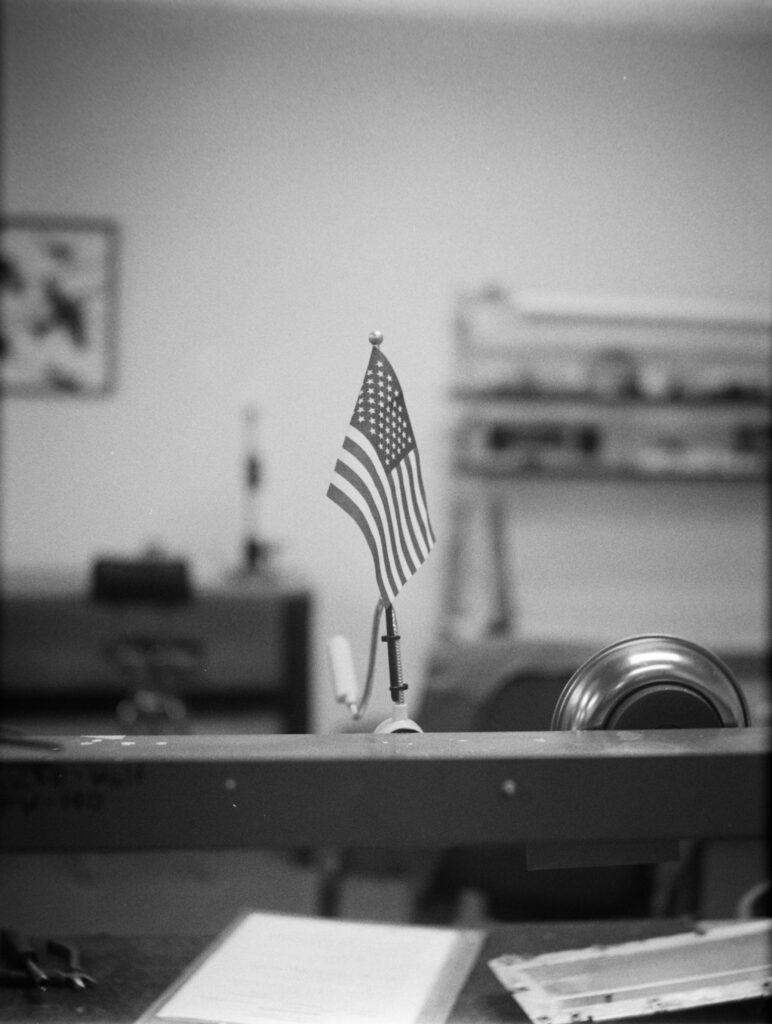
As a side note, this is why some black and white film stocks use “pan” in their name. JCH Street Pan for example.
Orthochromatic film however, is not sensitive to all wavelengths. Specifically, it can “see” blue and green light, but has no sensitivity to red light. Without getting too much into film history (mostly because I’m not qualified), it actually took some time to perfect film’s light sensitivity. Early emulsions could only “see” blue and UV light. Ortho was a big improvement, but it was itself eventually replaced by pan film when it became available.
Advantages
The main reason you’d shoot ortho film today is for the cool look that it produces.
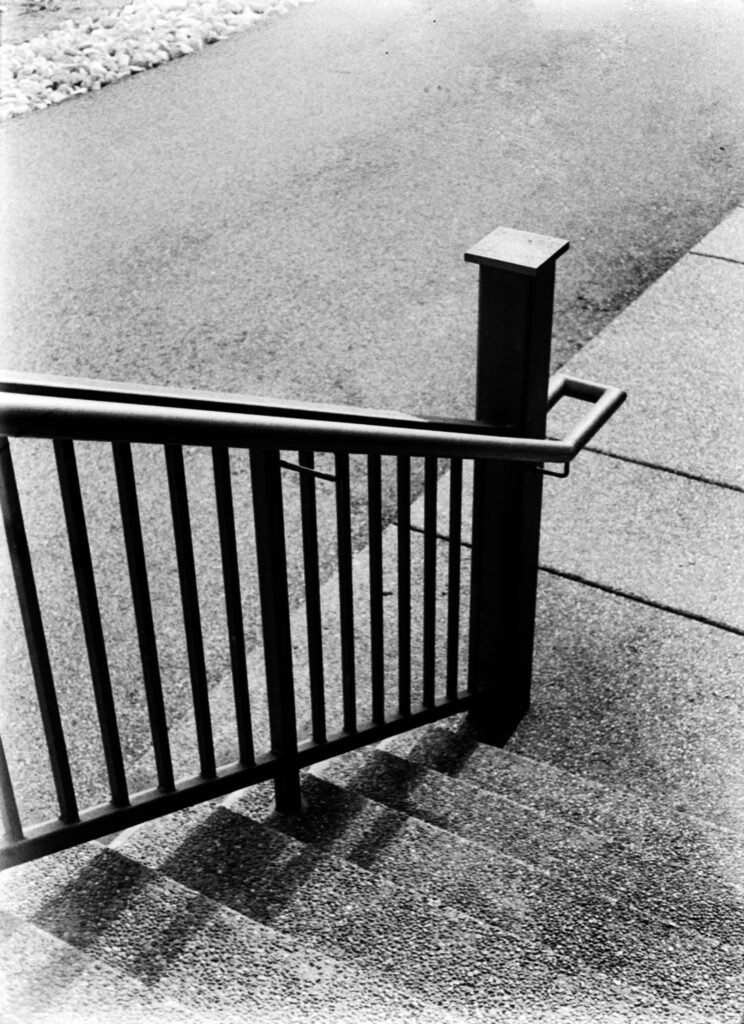
To give you an idea how ortho film renders color, here’s a color photo that I’ve converted to black and white in a photo editor. In the last image, I intentionally lowered the reds while converting it.
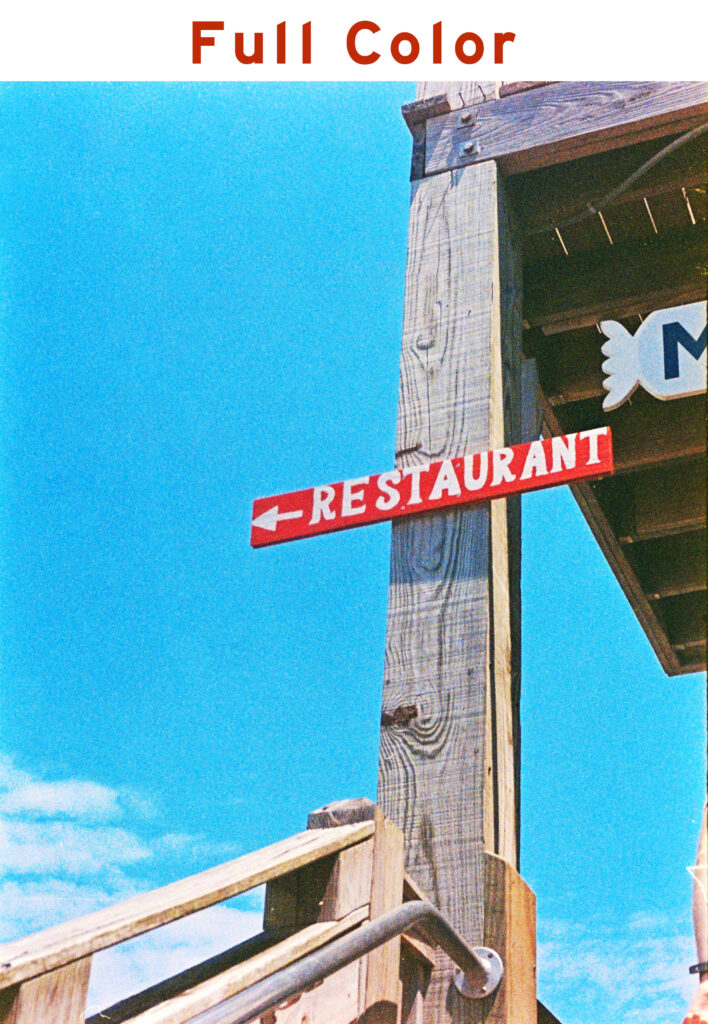
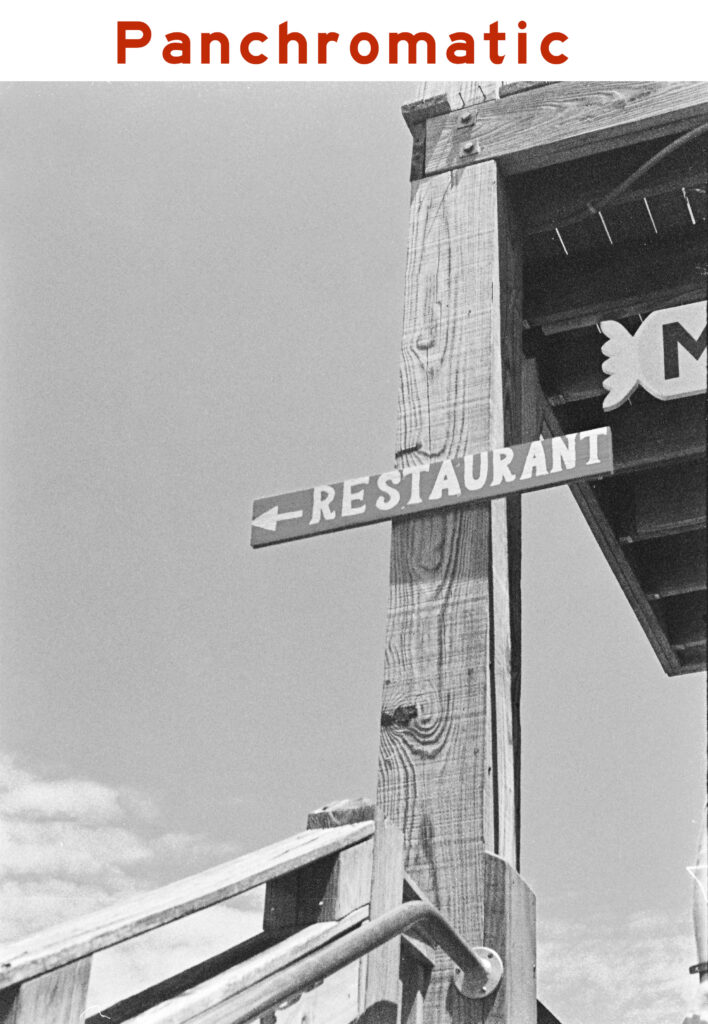
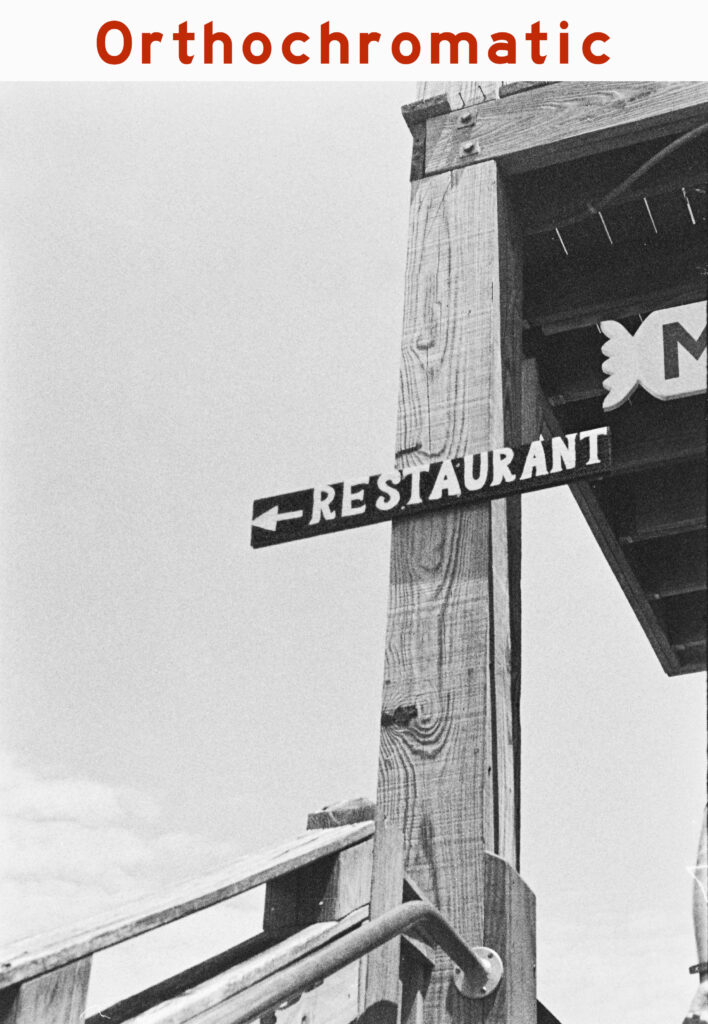
As you can see, the panchromatic image has a consistent natural tone, but the orthochromatic image stands out. The reds are very dark, giving the image a contrasty and unusual look. Ortho film is also great for photographers seeking a ‘vintage’ look, because it was common before modern panchromatic emulsions.
Another interesting feature of ortho film is its ability to be handled under a safelight.
I’m sure everyone is familiar with the classic red light dark room. What some people don’t realize however, is that a red safelight will destroy any color or panchromatic black in white film in seconds. Since that film is sensitive to all wavelengths, the monochromatic red light will overexpose and ruin the film.
Ortho film however has little to no sensitivity to red light. So you can technically open canisters under a safelight, which is potentially a lot easier than having to do things by feel in complete darkness.
Disadvantages
Currently there’s a few orthographic film stocks on the market, but none of them go above 80 ISO.
Formulating new emulsions is hard, and usually higher speeds are more difficult. Ortho film is a niche market and there’s only so much R&D money to go around.
In addition, white light is composed of green, red, and blue, so cutting out red light means your film is already 33% less sensitive. There’s not many reasons to go to the effort of making a high speed ortho stock when this handicap is imposed from the get-go.
It’s also worth mentioning that a similar look can be achieved with a cyan filter. This does not 100% recreate the look of real ortho film — particularly its innate high contrast — but it gets close. This was the way The Lighthouse (2019) was shot.
Conclusion
Now that you know what ortho film is, I hope you’ll at least consider giving it a try. I think the look is super interesting, and it’s definitely a look that makes your photos pop.

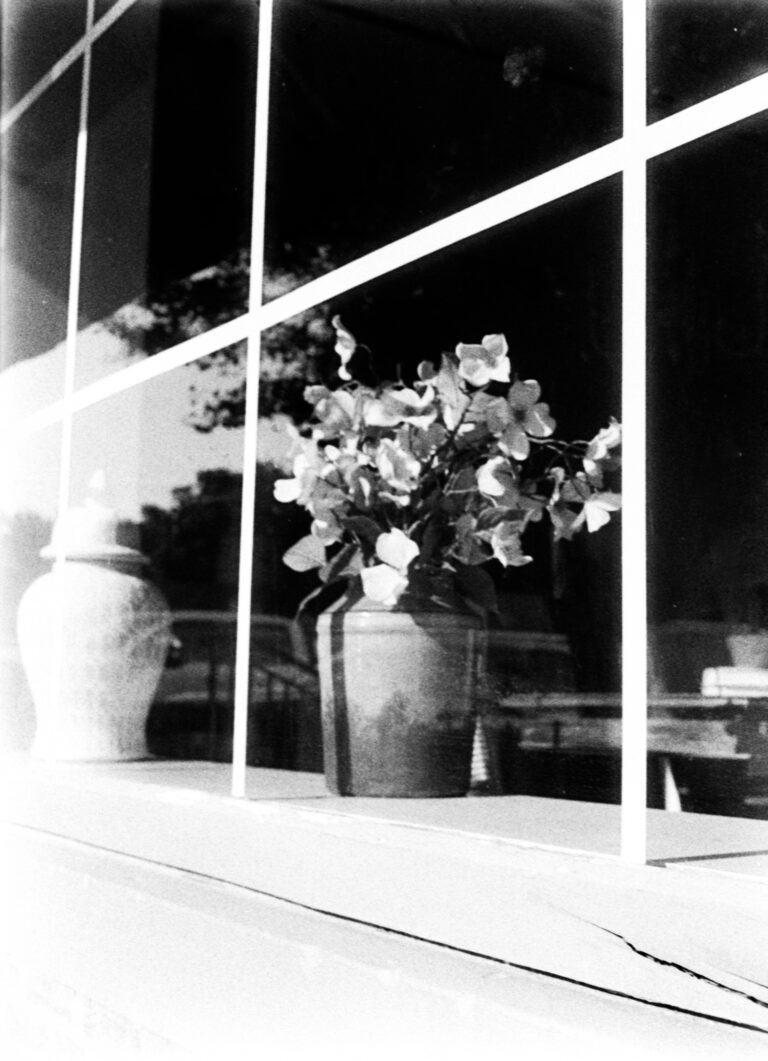

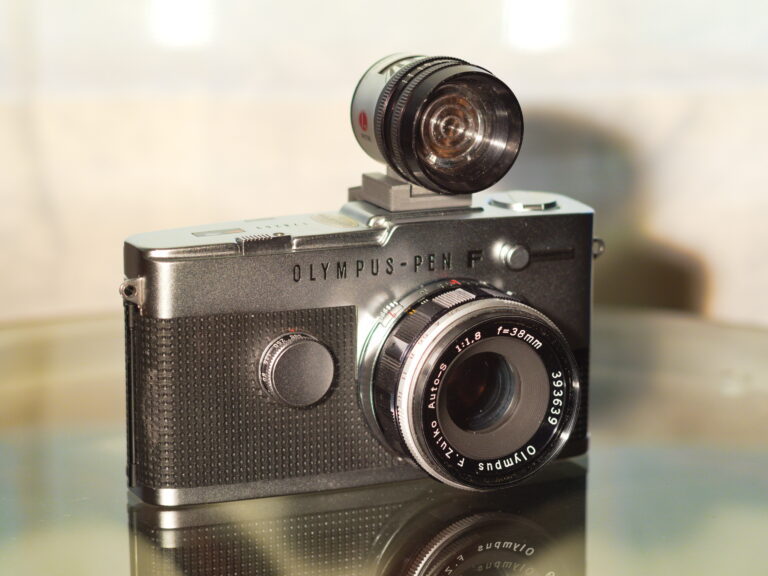
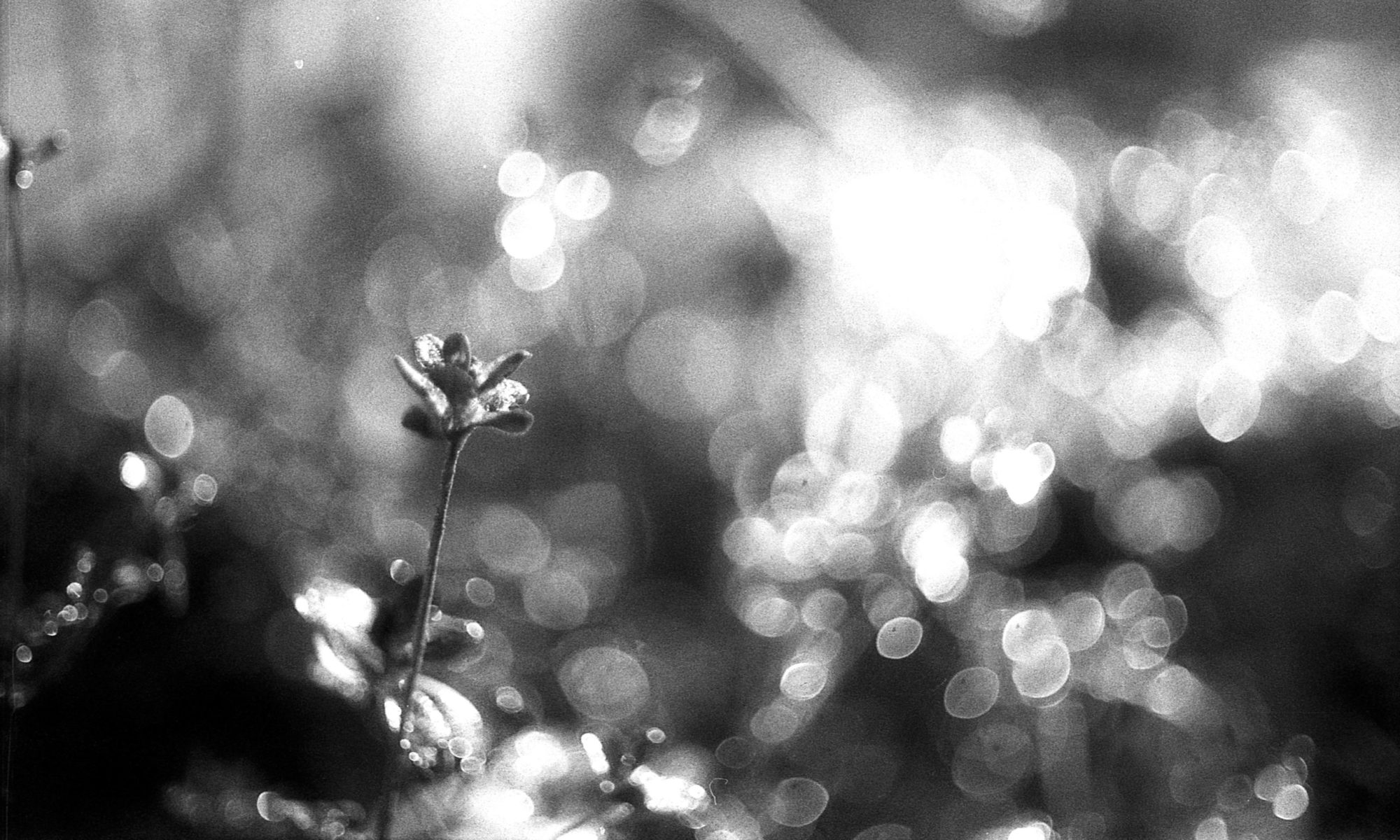


Leave a Reply